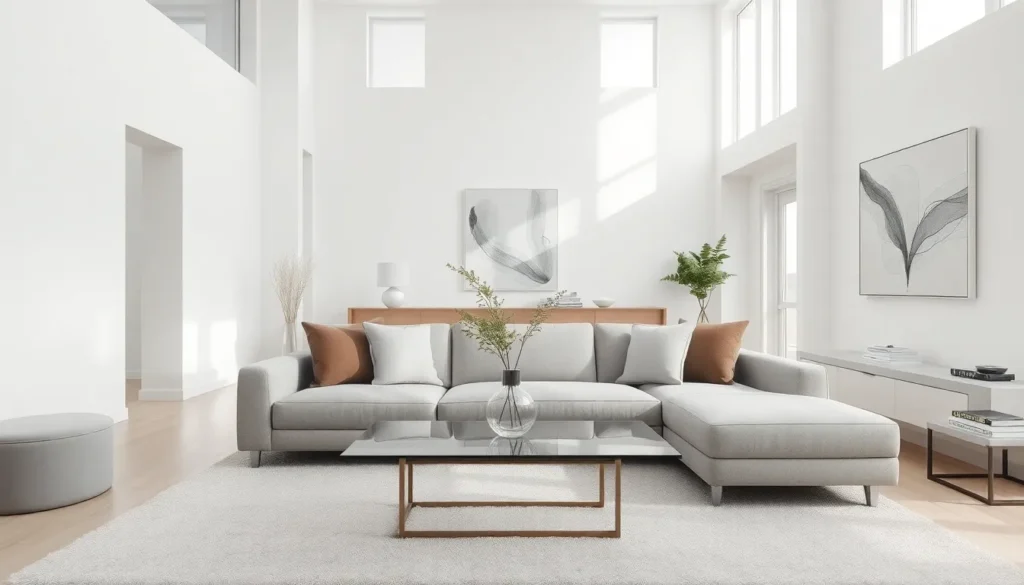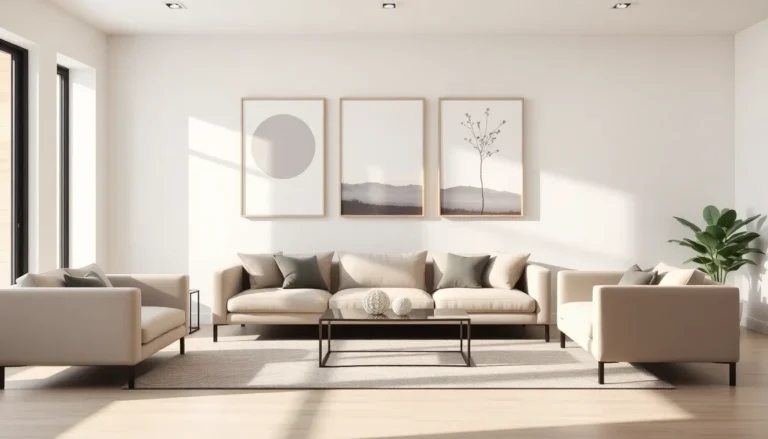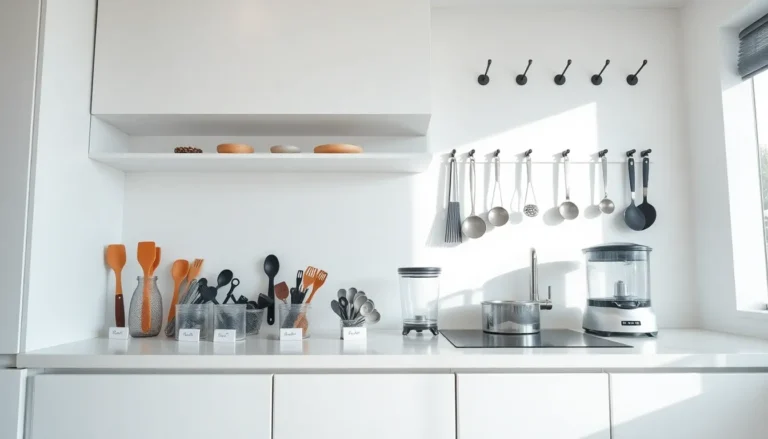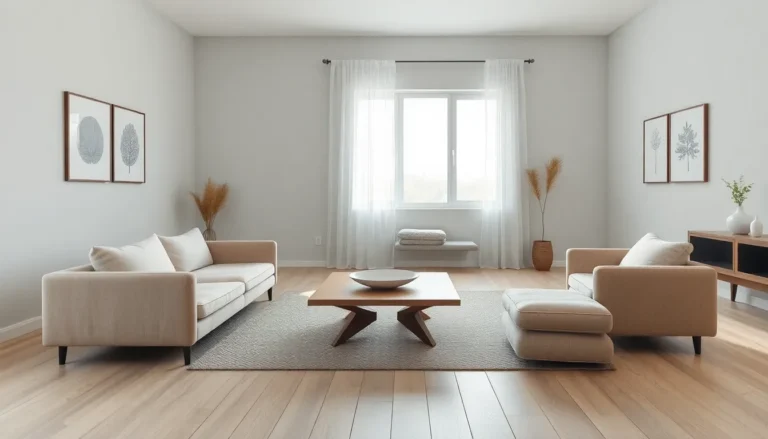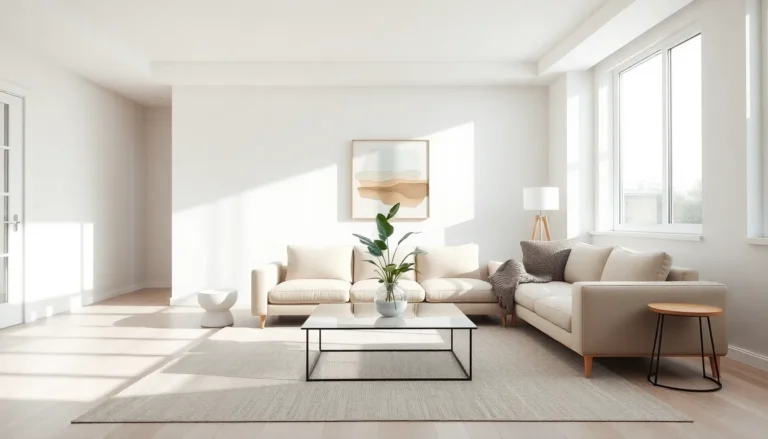Imagine walking into a space where simplicity reigns supreme and every piece has a purpose. Welcome to the world of minimalist modern design, where clutter is banished and tranquility takes center stage. If you think minimalism is just about having fewer items, think again. It’s an entire lifestyle choice aimed at enhancing comfort and focus. In this guide, we’ll explore how to craft a stunning minimalist modern living room that feels both inviting and sophisticated. So, grab your favorite drink and settle in, your dream living space awaits.
Table of Contents
ToggleWhat Is Minimalist Modern Design?
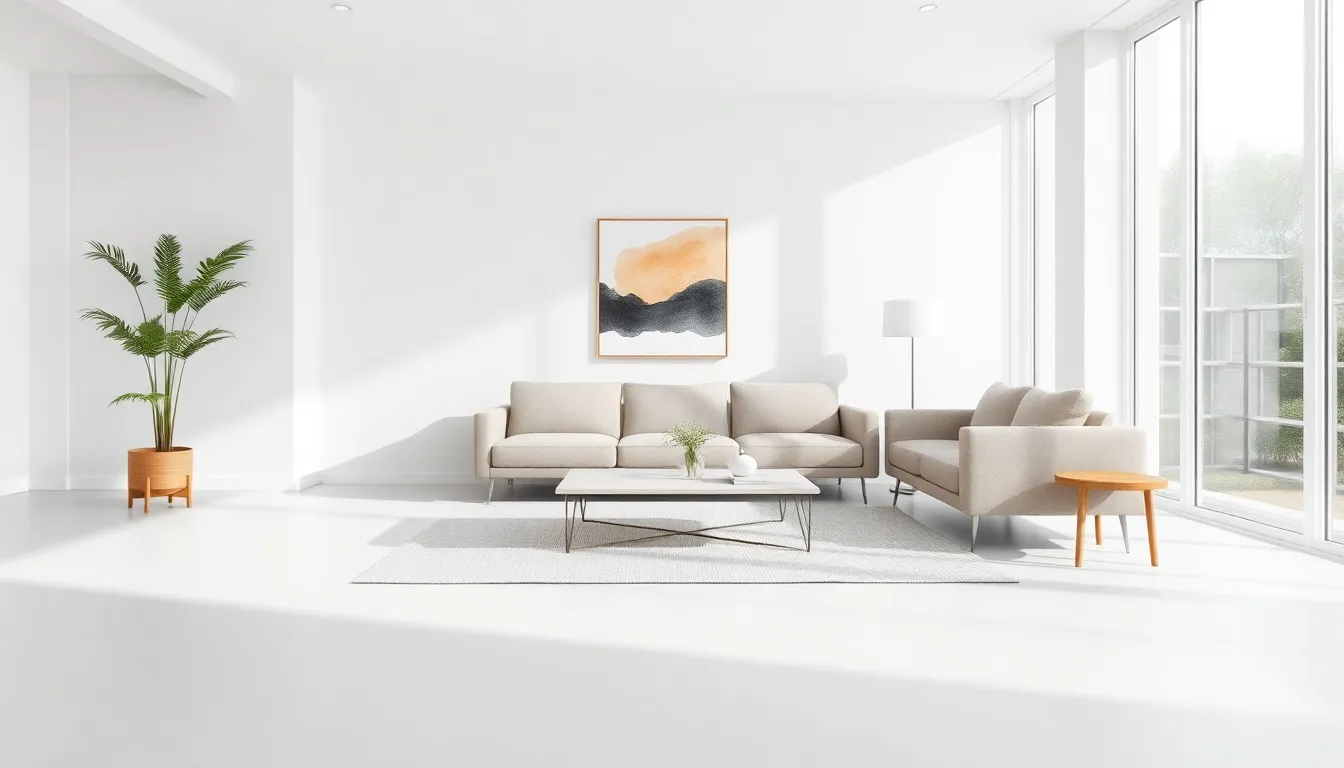
Minimalist modern design is all about stripping down to the essentials. This design philosophy emphasizes simplicity, functionality, and clean lines, yet never sacrifices style. Originating in the mid-20th century, it draws upon the principles of the Bauhaus movement, which champions the idea that form should follow function. You won’t find excessive ornamentation here, instead, every aspect is thoughtfully chosen to create a harmonious environment. This approach encourages individuals to focus on what truly matters, making it ideal for creating serene living spaces.
Key Characteristics of Minimalist Modern Living Rooms
One might ask, “What makes a living room truly minimalist and modern?” Several key characteristics distinguish these spaces. Firstly, simplicity reigns. Expect clean lines and uncluttered surfaces that breathe life into the room instead of suffocating it. Secondly, functionality is paramount. Every piece of furniture must serve a purpose, be it seating, storage, or aesthetics.
Besides, you will often see an open-concept layout that promotes a sense of flow, making spaces feel more expansive and airy. Choosing statement pieces instead of numerous decor items is also crucial, allowing each element to shine without competition. In minimalist design, less truly is more.
Color Scheme and Materials for Minimalist Spaces
When it comes to color schemes for minimalist modern living rooms, think soft neutrals. Whites, grays, and earthy tones create a calming backdrop. Occasionally, one can introduce a bold accent color to add personality without overwhelming the senses.
Material selection is equally important. Natural materials such as wood, stone, and metal often take center stage. These elements lend an organic feel to the space, contributing to its overall warmth. The focus on quality over quantity means selecting high-impact materials that exude sophistication while remaining understated.
Furniture Selection for a Minimalist Living Room
Choosing furniture for a minimalist modern living room can be a delightful task. Start by focusing on streamline shapes and functional designs. For example, sleek sofas with straight lines provide comfort without adding visual clutter. Opt for multifunctional pieces, like an ottoman that doubles as storage, to maximize space.
In terms of materials and colors, sticking to those harmonious with your overall color scheme ensures unity in design. Think about a coffee table made from reclaimed wood or a modern glass piece: both can enhance the room’s aesthetic while keeping it simple. Remember, each piece should feel intentional.
Decor and Accessories in Minimalist Design
Accessorizing a minimalist living room might seem contradictory, but the right decor can make the space feel complete without overwhelming it. Choose a few standout pieces, such as a large piece of artwork or a striking sculpture, to serve as a focal point.
Plants can also add a lively touch, enhancing air quality and brightening up the atmosphere. But, opting for single species and sleek planters keeps the look unified. Textures can add depth too, consider a cozy rug or a soft throw blanket to invite comfort into your minimalist oasis.
Creating a Functional Layout
A well-thought-out layout is essential in minimalist design, promoting accessibility and ease of use. Start by ensuring that there is enough space between furniture to allow movement and conversation. The layout should encourage flow and interaction, ideally with the seating arranged to foster conversation, creating a more inviting environment.
Consider using zoning techniques to differentiate areas within the room, such as separating the seating area from the reading nook, while maintaining visual coherence. Strategically placed area rugs can help define spaces without the need for walls, ensuring each area feels connected yet distinct.
Tips for Achieving a Minimalist Modern Aesthetic
Achieving a minimalist modern aesthetic may seem daunting, but a few tips can simplify the process. Firstly, declutter ruthlessly, if it doesn’t add value to your life or enhance the space, let it go. Adoption of a one-in, one-out policy when shopping can help maintain equilibrium.
Secondly, invest in quality pieces instead of numerous cheaper items. High-quality furniture and decor last longer and elevate the overall aesthetic. Use light strategically, natural light is a minimalist’s best friend, so consider window treatments that allow it to flow freely while providing privacy.

